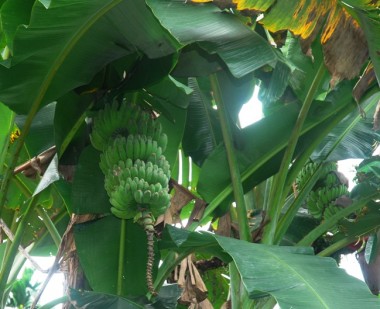Apr 14, 2013
Our Chickens Love Our Fruits As Much As We Do
People ask why we feed our chickens fruits, up to 40% of their diet, and not sell the fruits and use the proceeds to buy cheap grains like corn, since fruits, especially our certified organic fruits fetch such a high price? Well the answer is this: We Are What Our Animals Eat, health-wise that is. Bananas for example have an omega 6: omega 3 ratio of 1:1. Corn is 40:1. Chickens fed corn and other grains will have ratios of 40:1 and more. One chicken we had tested came in at 59:1. That's scary. And what about those chickens fed organic grains? Well, at the risk of sounding flippant, you will end up with 'organic' omega 6.
18:06 | Permalink | Comments (0) | Tags: omega 6 omega 3 ratio in our food, organic chickens, grassfed chickens, malaysia, organic feedstock
Mar 15, 2013
The Yellow Birdwing, Troides helena, is now a resident
On the 1st day of this year we saw for the first time a single female Yellow Birdwing, Troides helena, flying fast at the perimeter of our farm, as if making an aerial survey.

From a distance, it looks like a bird
The Yellow Birdwing is protected by law and is becoming difficult to see in the wild due to loss of habitat and due to collectors.

The female zooming past us on the 1st of January, 2013
Just barely 2 1/2 months later, they have made our farm their home. They are breeding and have become a familier sight. And interestingly, they show no fear of us. Also of interest to us is the fact that the farm has a larger share of birds than other places and yet they choose to breed here.
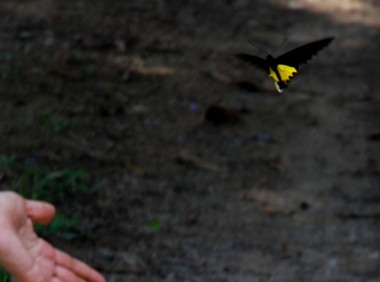
They show no fear of us
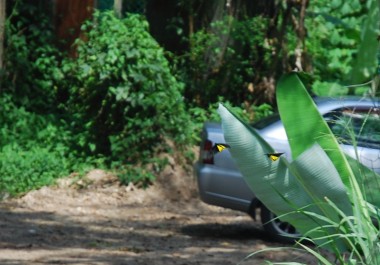
You won't find wild birdwings flying around your cars!
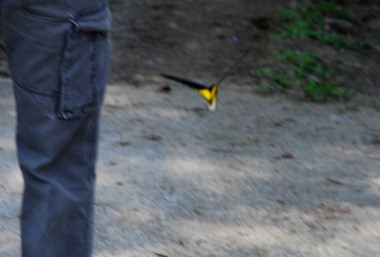
Flying close to us without fear.
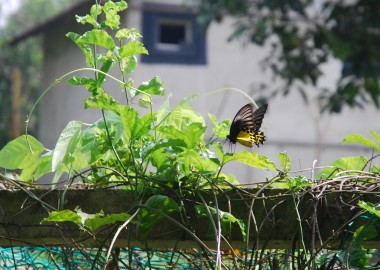
We leave fruits to ripen on the trees for birds and butterflies. Our workers are instructed not to feed nor to disturb nor to stare at the birds, and also the butterflies. We make as if they are non-existent. We plant their larval plants and we plant flowering vines that will bloom up in the canopy for the butterflies. And above all, no poison, no chemicals. We co-exists, and they so enrich our lives as farmers.
18:18 Posted in Blog, Nature Farming, Permaculture, Sustainable Farming | Permalink | Comments (0) | Tags: common yellow birdwing butterfly, troides helena, rare butterflies
Dec 17, 2012
Eco-Friendly Small Scale Slaughterhouse
We have designed and built possibly the first eco-friendly halal slaughterhouse for small-scale operations.
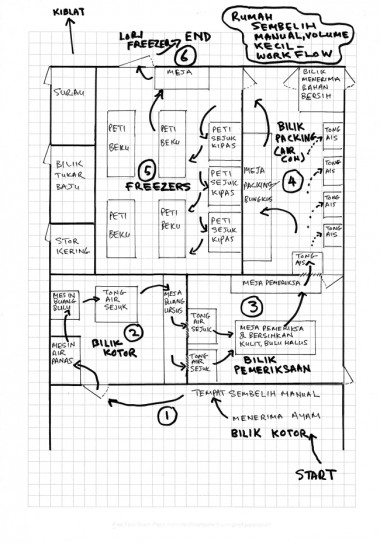
Proper separation of 'dirty' and 'clean' areas are provided for. Packing areas are air-conditioned to reduce bacterial growth. HACCP points are established.
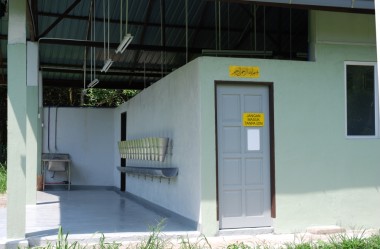
All wall surfaces are coated for hygiene.
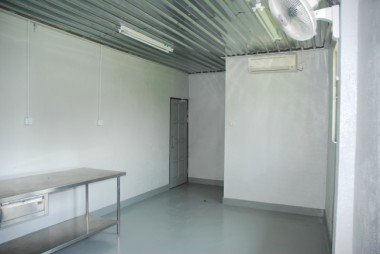
Packing areas are air-conditioned and all walls are coated and ceilings are stainless steel.
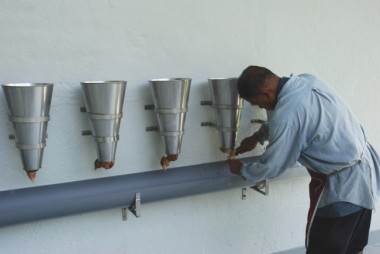
Slaughering is done manually by a Jakim certified slaughterer; no electro-shock stunning for us which is painful to the animals and which is subject to mishaps from the standpoint of halal.
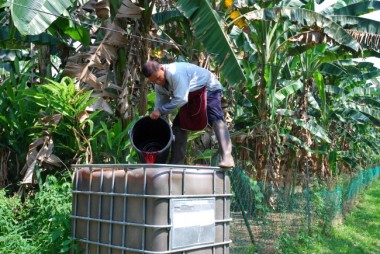
All wastes, including blood, feathers, entrails, etc are fermented and recycled to be used as fertiliser for our fruit trees. Nothing goes to waste, nothing ends up in the rivers. Nothing is processed and fed back to the chickens as 'meat, bone and blood meal'.
Our slaughterhouse is fully certified by Majlis Ugama Islam dan Adat Resam Melayu Pahang under certificate number H 1223.
Dec 12, 2012
Animal Rights? Human Rights?
It seems odd that so many talk about welfare and rights for animals, and about taking care of the environment and the ecology and yet are silent about clear blatant human rights abuses happening right in front of our eyes. And blatant injustice.
Are we not hypocrites then, when we scream and shout and march over mistreatment of dogs and cats, and yet chose to ignore, yes ignore abuses to our fellow humans?
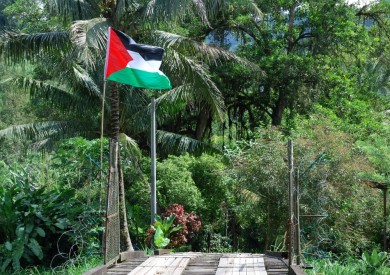
This is the flag of a people that have been subjected to the worst injustices in modern times. It is flying proudly over the simple wooden bridge that's leading to our farm. It represents our solidarity with them.
Their land has been taken, their farms and olive groves bulldozed, their movement restricted, their leaders assassinated without trial, their children and aged are killed but glossed over as 'collateral damage', lies are spewed about them, media is used to paint a picture of them as being monsters.
A great man once said, if we see a wrong-doing, we must oppose it with our hands. If we are not in a position to do so, then we must use our tongues. If even that we are unable to do, then we must oppose it in our hearts.
We are enjoined to oppose all wrong-doing that we see, in treatment of animals, in treatment of the environment, in the community, and yes, even when we see injustice in faraway lands.
Being neutral to injustice being perpetuated is equal to contributing to the perpetuation of injustice.
To do nothing, to feel nothing, to ‘see’ nothing would mean we have lost all faith, and surely that is a sorry state indeed for a man to live his life.
Here is the attempts of one brave young man who decided to stop being a hypocrite:
http://www.facebook.com/harryfear
I hope fair-minded readers of this blog will at least make an effort to understand the conflict as it is today, and if nothing else, 'oppose it in your hearts'.
19:53 | Permalink | Comments (0) | Tags: palestine conflict, gaza, palestinian problem
Nov 12, 2012
When Nature Gives Feedback
Amorphophallus prainii will go dormant for months. And just when you thought they have died or something, suddenly they start sprouting all over the place.
They love soil with lots of organic matter, 'living' soil. And we are sure there’s a relationship between them and microbial life as we find the ‘wilder’ the spot, the more they sprout.
Our farm must be entirely 'wild', being free from chemicals for two decades now. And recently due to constant rain, they started sprouting all over the place.
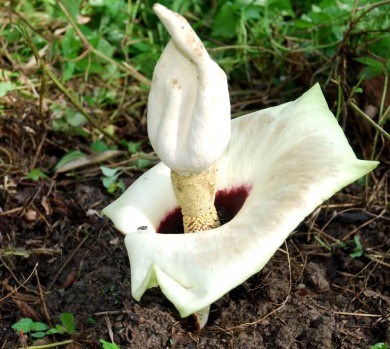
Said to be uncommon, but it seems to be found everywhere in the farm. We counted close to a 100 of them.
The corm or tuber has been used for food, but it has to be treated properly as it is high in calcium oxalate and can cause you to have a severe choking reaction.
Researchers have found that it can destroy cancer cells in rats, and also it can repair damaged liver cells.
Research paper on hepatoprotective activity
Research paper on cytotoxic activity

Extract from the corm have shown hepatoprotective and cytotoxic activity.

The plant before it dies back and go dormant or rarely, it will send out a blossom.
17:42 Posted in Blog | Permalink | Comments (4) | Tags: amorphophallus prainii, pokok ubi lekir, loki, ubi kekek, calcium oxalate, cytotoxic plants, hepatoprotective plants
Sep 01, 2012
Animal Feedstock - localise it
There is this mental block that we have to have corn for animal feed. So Malaysia try to grow corn for feed but it did not work out too well - not if you are competing with heavily subsidised imported corn. Further, corn and soya are termed 'commodities', ie it means people are allowed to speculate on its future price. For farmers that means your future is influenced by speculators. For small countries like Malaysia, that means our food security is in the hands of big spending speculators. Hey, that's not a comfortable position to be in, and really I often wonder why we allow ourselves to be dragged into such a precarious position.
So, recently due to droughts in USA, speculators have jumped in and the price of corn and soya has gone through the roof. Farmers are dying because suddenly more cash is needed, practically overnight, to feed the animals. Consumers are shouting because suddenly meats are more expensive.
One of the ways local small farms can get off the carousel is to grow feedstock that is indigenous to local climate and which require as little input as possible.
At our farm, we use cooking bananas. All imported feedstock corn is GMO. Our bananas are not.
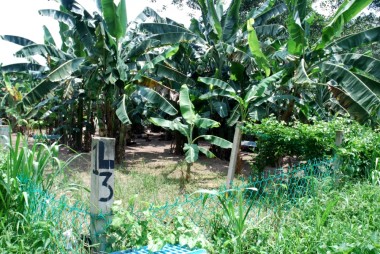
All our chicken fields are planted with these bananas

They are tall trees, up to 25ft, with large shade areas. The fruits are higher in energy values than corn.
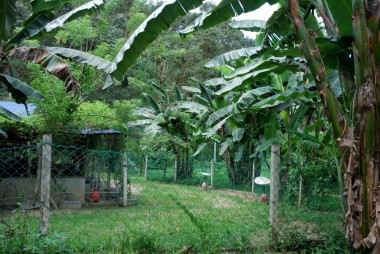
Because of their height and large shade area, we plant them to block off west-side sun, thus saving on artificial cooling costs.

They also play an ecological role by absorbing nutrients from waste water since they are water-resistant.
They produce more feedstock per acre of land than corn.
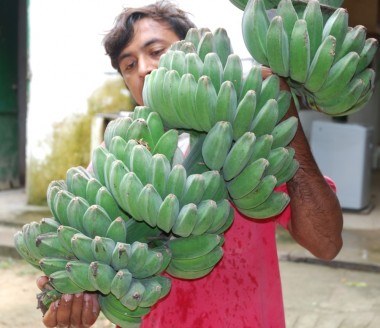
Each bunch is about 20 to 30kg

They store well, and can be readied for feedstock in a jiffy
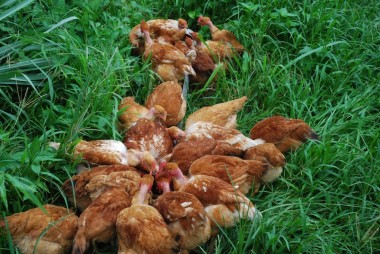
Chickens love the bananas and make a mad rush for them when presented.
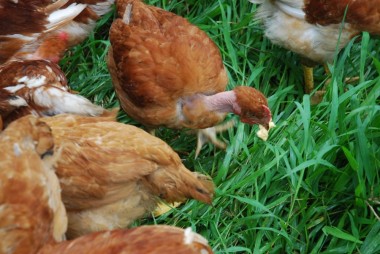
Bananas do not have the high omega 6 that corn has and thus produce a healthier meat for human consumption. Corn not only have high omega 6 but also is practically 100% GMO now.
10:31 Posted in Blog, Permaculture, Sustainable Farming | Permalink | Comments (0) | Tags: feedstock, increasing food costs, corn, soya bean, drought, cooking banana, bbb musa, local feed ingredients
Aug 04, 2012
Mimicking Nature - Can We?
The forest have many layers.
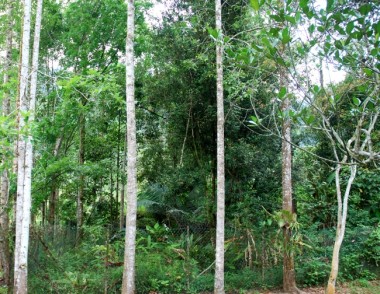
Permaculturists say 7 0r 8. I think more. Under the soil, many more layers to be discovered. I planted a small 50ft x 60 ft layer garden. A meranti tree is the canopy tree. Then eugenias and so on. In no time, a multitude of life forms made the garden their home. Lichens that I have never seen. Fungi, frogs, birds, insects, and unseen, millions maybe billions of microbial life that infuse the garden with energy or qi.
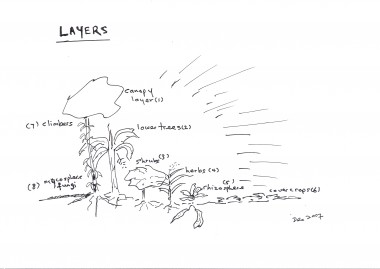
Can this multi-layered model of sustainability, successful for 150 million years, be applied to our modern food needs?

The modern farm - a barren blight on the earth. Can we grow food and yet support a multitude of life forms and working with these lifeforms reduce chemical and energy inputs? Perhaps we should start with reexamining what is meant by 'productivity'.
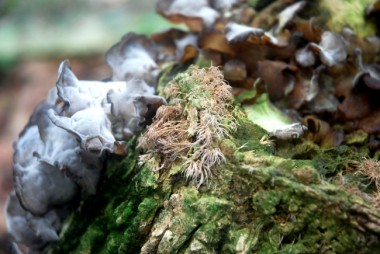
Life forms most of us have never seem have appeared in my little layered garden.

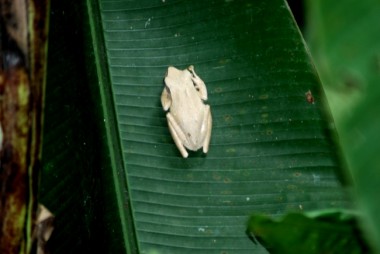
I have never seen this frog in a farm. Have you?
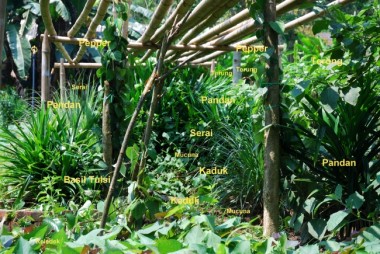
This is the start of a layered food model. Can we extend this to a commercial scale and yet remain efficient in terms of labour, harvesting, cycling, inputs? What new measures do we need to work out its productivity against that of conventional mono crops?
15:16 | Permalink | Comments (0) | Tags: permaculture, layered garden, layered forest, new model for agriculture
Jul 22, 2012
Forest In A Farm
Twenty years ago, we started to plant forest trees in a zone within the farm. Today, some of the trees are 100 feet tall, and of course, still growing. We plan now to develop this zone into an area of bio-diversity and hopefully, some of the animal life driven off by logging uphill, will instead make this zone their home. The forest uphill was home to siamang, wild cats, and many more.
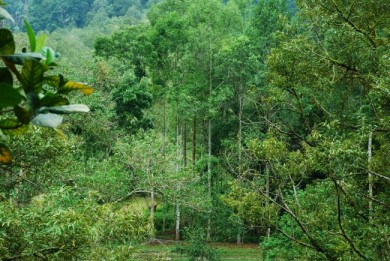
Canopy trees in a farm!

Meranti

Pulai
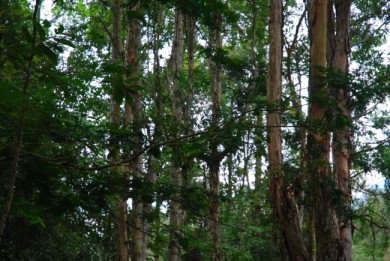
Gelam

Kasai
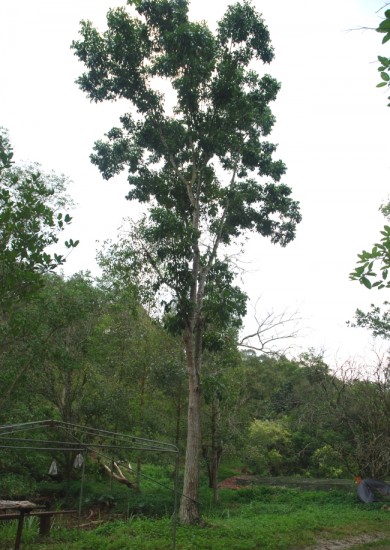
Mahagony
Sustainable agriculture is long term, planning decades ahead, not months or weeks.
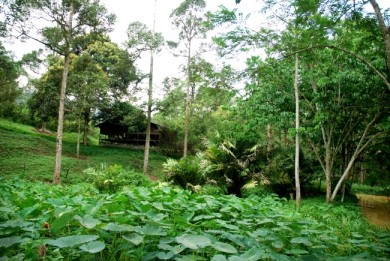
At one end of the zone is this beautiful location, perhaps a suitable site for a Sustainable Agricullture Institute.
08:02 Posted in Blog, Permaculture, Sustainable Farming | Permalink | Comments (0) | Tags: agro forestry, permaculture, meranti, nyatoh, pulai, rain trees
Jun 28, 2012
Farewell to my friends....
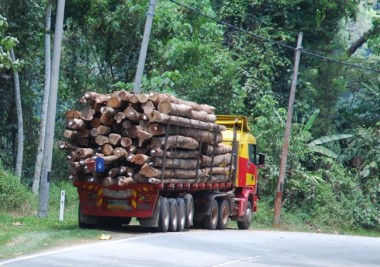
Saw this lorry with freshly harvested logs parked near the farm. Shocked, I found out that they are harvesting the trees at the back of the farm next to the forest reserve.
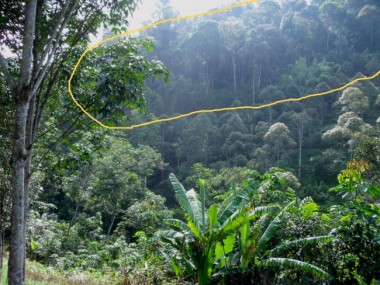
This is the area they are logging. I have wandered there since 1991 and I know practically every tree there. Some are easily 150 years old.

Another view of the area being logged. Up till today I cannot understand the economics of logging and how it benefits the people. Through our Government which represents our desires and wishes, we will get a royalty payment, I think for each tree. How much are we getting? RM5000 per tree? RM10,000 per tree? It is a one-off thing. After that, what? Wait another 150 years for the forest to recover and grow trees like that?

The loggers moved fast. Within a week, they have marred the hillside. No notification given to neighbours, no consultation, no EIA reports.
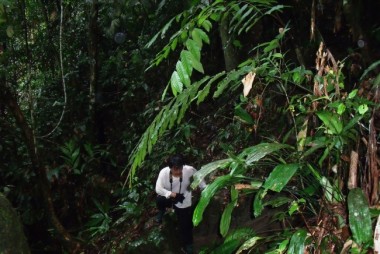
Me, inside the jungle, with my friends, the trees. Farewell my friends. There's nothing I can do since 30 million Malaysians want you guys to be chopped down.
20:14 Posted in Blog | Permalink | Comments (0) | Tags: economics of logging
Jun 20, 2012
Useful Plants At The Farm - Lemba
Lemba or curculigo latifolia is native to Malaysia. We grow them at the farm to preserve them.
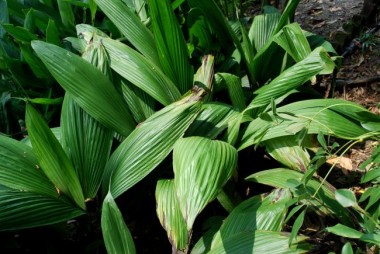
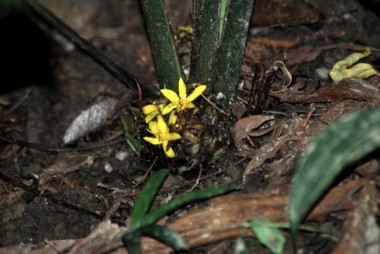
It has tiny, bright yellow flowers
They have fibers that can be used to make ropes and textiles.
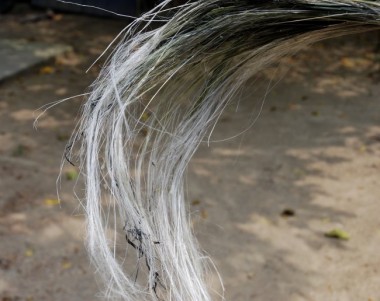
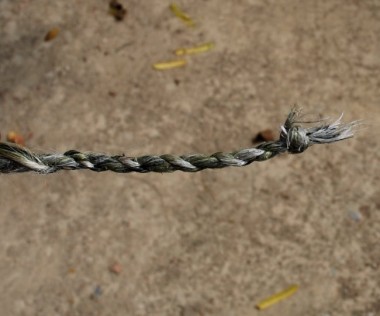
A rope made from the fibre. Strong enough for farm use.

The Ibans use the fibre to make a textile called 'pua'
And most importantly, they have a taste-modifying protein which changes plain water and sour drinks to sweet. Japanese researchers have patented the protein.
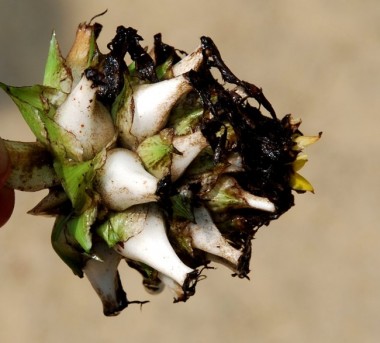
Bunch of lemba fruits

The tiny taste-modifying fruits
Foreign researchers coming into Malaysia should be required to sign an agreement to share patent-rights and commercial benefits with the people of Malaysia as represented by the Government.
It is ridiculous and maddening to hear foreign researchers write that they have discovered that the plant can modify the taste of sour drinks to sweet when it is most likely the case that the local people told them about the plant and it is something the local people have known for generations.
We have numerous emails, some frenetic, wanting this herb and that herb etc. from researchers local and foreign. I am sorry, I won't even bother to answer your email unless at the outset you declare that all research findings, etc will be shared, and in the event of patents, commercial profits, etc., to be share with an institution of our choosing.
12:04 Posted in Useful Plants | Permalink | Comments (0) | Tags: lemba, curculigo latifolia, curculin, artificial sweetener, natural sweetener, taste-modifying protein








